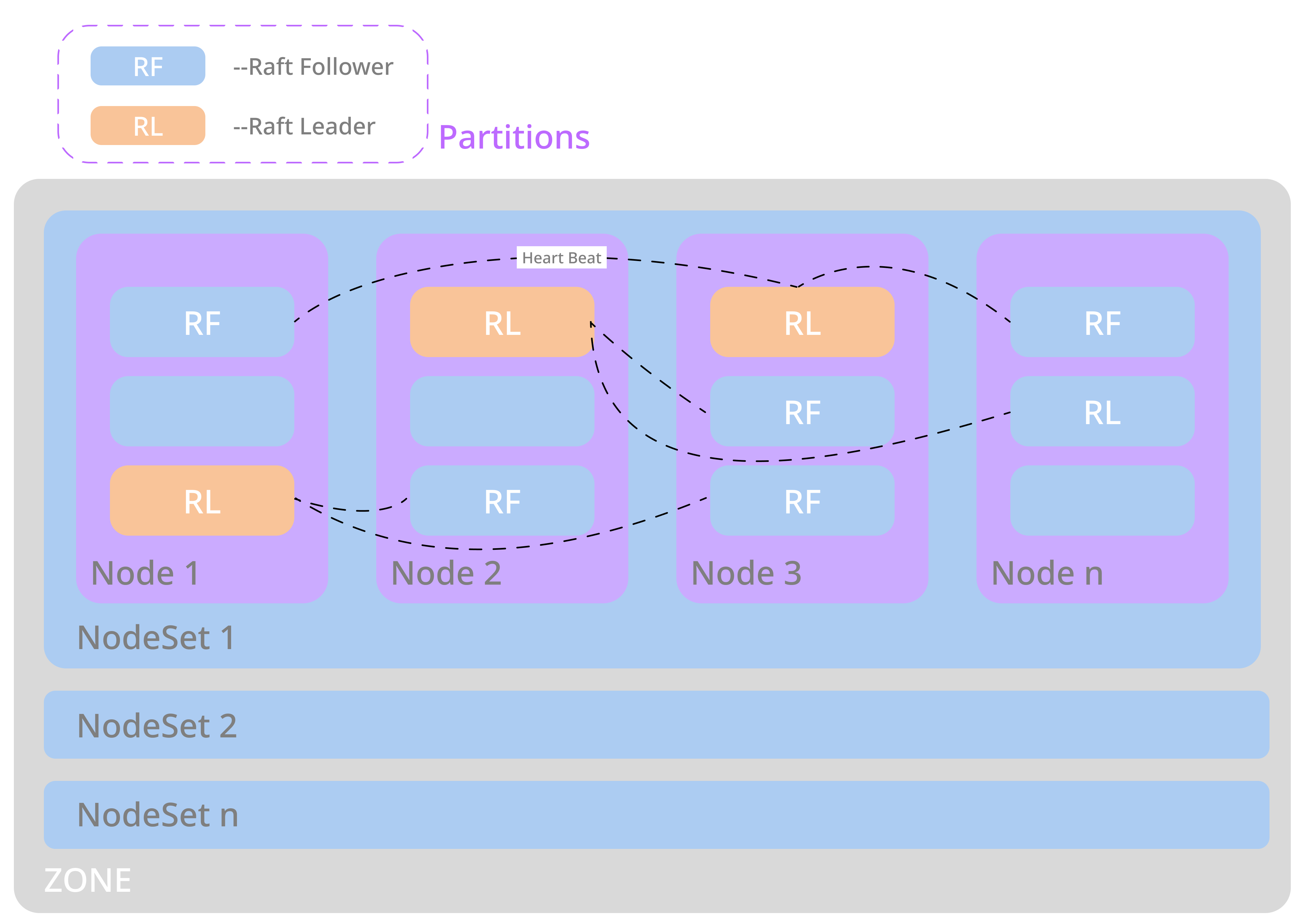Zone Management
Setting cluster zones can prevent the entire cluster from becoming unavailable due to a single partition failure. When each node is started, set zoneName in the configuration file and it will automatically join the zone.
View Zone Information
$ cfs-cli zone list
ZONE STATUS
default available
Modify Zone
If you accidentally set the volume partition incorrectly, you can change the partition by executing the following command:
$ cfs-cli volume update {volume name} --zone-name={zone name}
Default Zone
Most parameters in the cluster have default values, and the default zone name is default. It should be noted that there must be enough datanodes and metanodes in a partition at the same time, otherwise, when creating a volume in the partition, either the data partition initialization will fail or the metadata partition initialization will fail.
Meaning of NodeSet
Each zone will have several nodesets, and the default capacity of each nodeset is 18 nodes.
Because CubeFS has implemented multi-raft, each node has started a raft server process, and each raft server manages m raft instances on the node. If the other replicas of these raft instances are distributed on n nodes and the raft instances send raft heartbeats between them, the heartbeats will be transmitted between n nodes. As the cluster scales up, n will become relatively large.
Through the nodeset restriction, the heartbeats are relatively independent within the nodeset, avoiding the heartbeat storm problem at the cluster level. We use the multi-raft and nodeset mechanisms together to avoid the problem of raft heartbeat storms.

Distribution of dp/mp in NodeSet
The dp/mp is evenly distributed in the ns. Each time a dp/mp is created, it will start polling from the ns where the previous dp/mp was located to find an available ns for creation.
Planning the Number of NodeSets
For dp/mp with 3 replicas, dp/mp will only select the ns when there are at least 3 available nodes in the ns.


